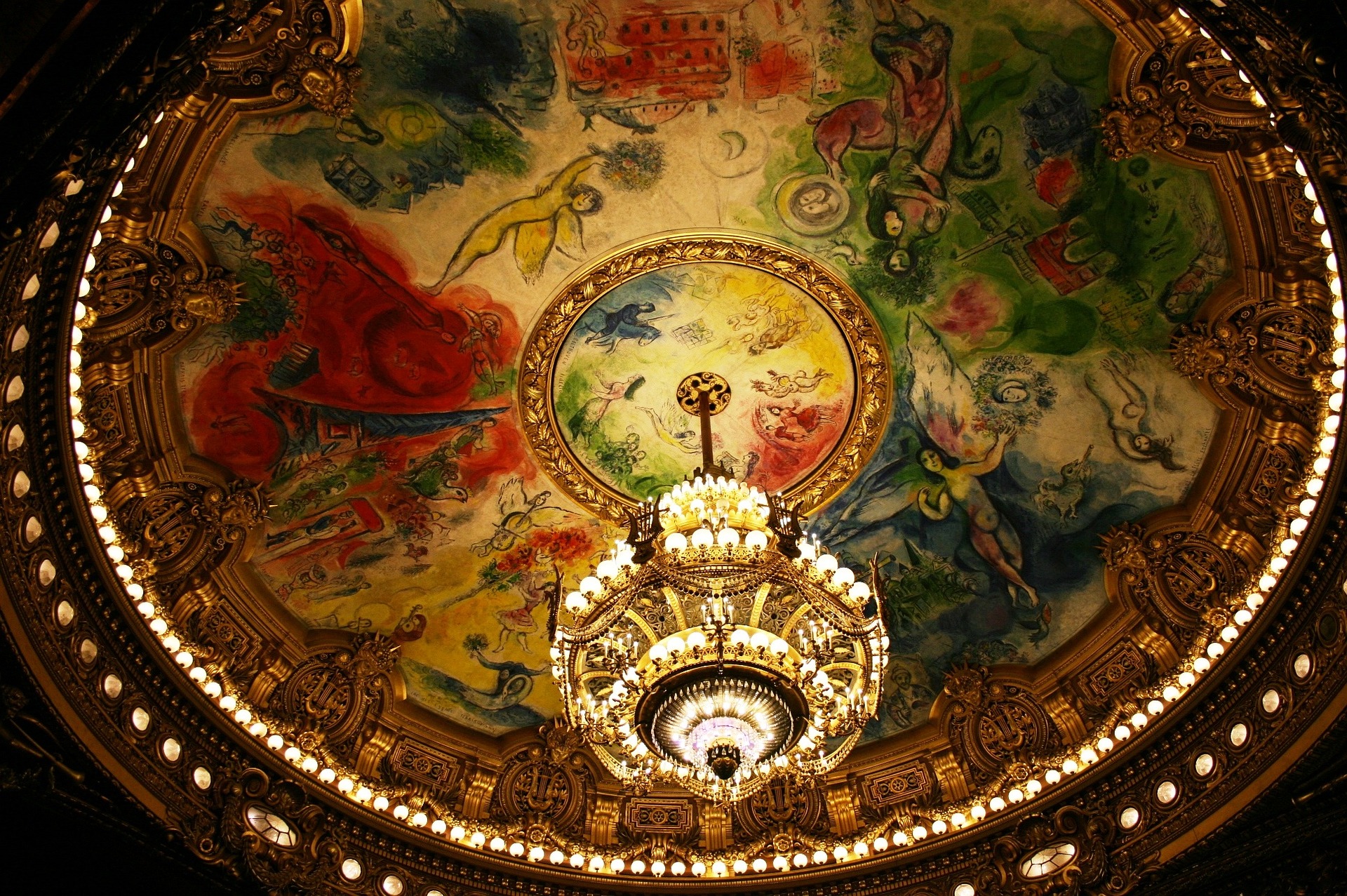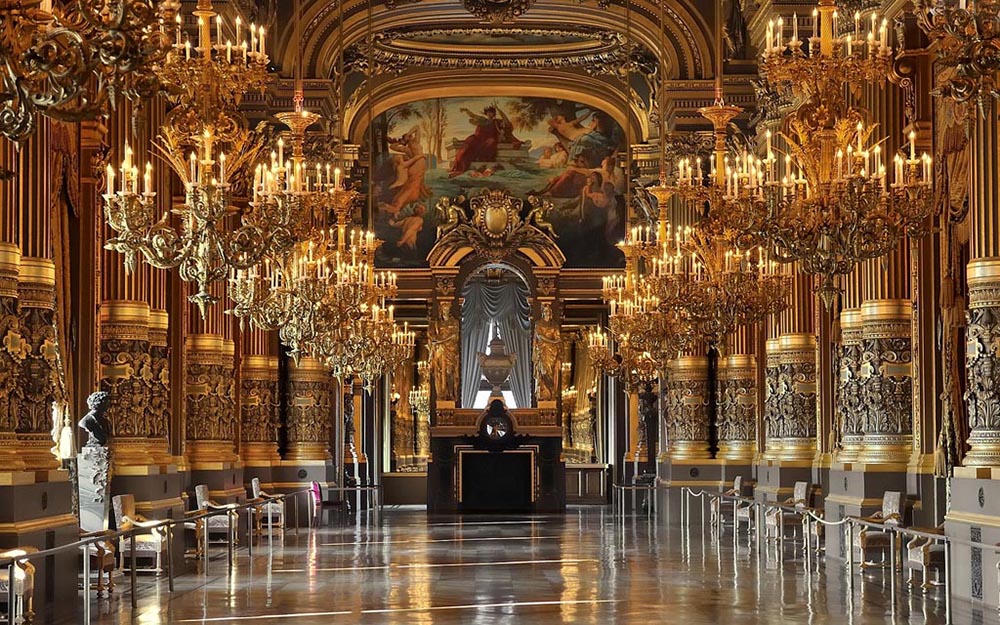At the Opéra stop:
Paris Opera House

In 1858, Emperor Napoleon III was almost the victim of an assassination attempt while visiting the opera, located in a seedy part of town. Because of this, he decided a new, extravagant opera house would be built in a safer part of the city, that included a well-guarded private entrance for him and his family. Over 170 people submitted proposals of their ideas, but it was 35-year-old Charles Garnier who won the competition in 1860. His vision of luxury took 15 years to complete, and no expense was spared in the construction.
Going to the opera in late 19th century Paris was not so much about marveling over music and dance, but rather showing off your wealth and power. The winding staircases and balconies allowed people to see and be seen, and they wanted to be seen at their very best. Attendees would deck themselves out with jewels and gold which they kept locked away in bank vaults. As a result, many banks opened nearby and would stay open late so the valuables could be returned once the opera was over.
You are lucky enough to be investigating during a rehearsal of the opera Carmen that debuted on this very stage in 1875. As you listen closely to the production, your ear catches a few sour notes being sung by the lead singers. At first you are appalled that such amateur talent would be starring in such a prestigious performance. Then you realize you are being watched as if to be tested. You begin to inspect the sheet music placed on the seat beside you and immediately spot some peculiarities. To earn your next paint coordinates, you must decipher the password contained in the music.
For your listening enjoyment, play the following recording of Carmen’s Habanera. (Does not contain clues for the puzzle.)
